Disclosure: This article contains affiliate links. We may earn a commission from purchases at no extra cost to you, which helps our travel content.
The first time I stepped onto Copacabana Beach, I was both mesmerized and overwhelmed. The iconic crescent of sand was everything postcards promised – vibrant, pulsing with energy, and undeniably beautiful. But as an animator accustomed to noticing details others miss, I quickly realized something: this wasn't where Rio's soul lived. On that sweaty December afternoon, surrounded by tourists jostling for the perfect selfie spot, a local artist I'd befriended leaned in and whispered, 'Maya, the real Rio is waiting beyond these famous shores.' That conversation sparked a two-week adventure hunting down the hidden coastal treasures where actual Cariocas (Rio locals) spend their beach days. After countless bus rides, several wrong turns, and conversations in my broken Portuguese, I discovered a different Rio – intimate coves where fishermen still launch their boats at dawn, protected bays where families gather for Sunday picnics, and secluded stretches where the soundtrack isn't vendors hawking souvenirs but the pure rhythm of Atlantic waves.
Praia Vermelha: The Crimson Jewel
Nestled at the base of Sugarloaf Mountain, Praia Vermelha feels like stepping into a secret garden that happens to have a beach. The name translates to 'Red Beach,' a nod to the rosy hue the sand takes on during certain sunsets. Unlike its famous cousins, this compact crescent offers something increasingly rare in Rio – tranquility.
I discovered this gem during my second day in Rio when my hostel owner noticed me planning the typical tourist route. 'Go early to Praia Vermelha,' she advised with a knowing smile. 'Take the bus to Urca and walk. You'll thank me.'
She wasn't wrong. Arriving just after 8 AM, I found myself alone except for a few local joggers and an elderly couple setting up their chairs with the practiced precision of decades-long routine. The beach itself is relatively small – perhaps 300 meters long – but what it lacks in size, it makes up for in drama. The imposing presence of Sugarloaf creates a microclimate that often keeps the water calmer than other beaches, making it perfect for a morning swim.
The water clarity surprised me – I could see tiny fish darting between my feet, something unimaginable at Copacabana. After my swim, I dried off on my quick-dry travel towel (an absolute lifesaver for beach-hopping days) and watched rock climbers scaling the nearby cliffs while sipping fresh coconut water from a small stand operated by a man who told me he'd been selling there for 37 years.
What makes Praia Vermelha special isn't just its beauty but its accessibility. Despite feeling worlds away from tourist Rio, it's surprisingly easy to reach and combine with a visit to Sugarloaf Mountain.
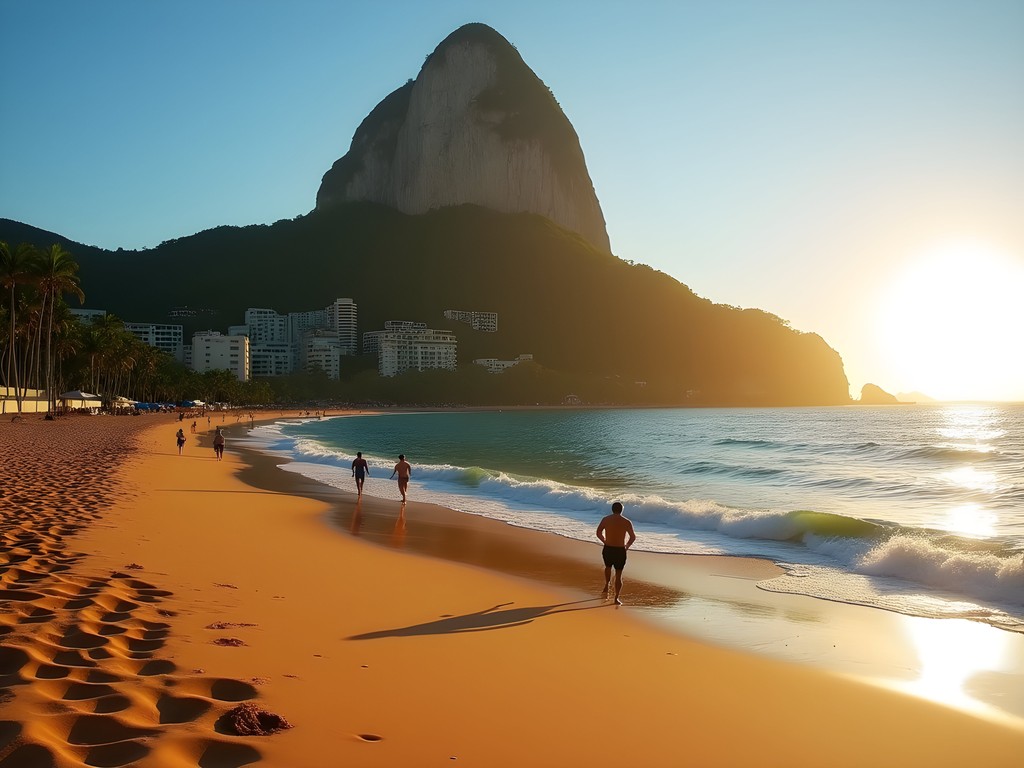
💡 Pro Tips
- Visit early morning (before 10 AM) or late afternoon for the best experience with fewer people
- The beach has bathroom facilities but bring small change as they require payment
- Combine your visit with the Pista Cláudio Coutinho hiking trail that starts nearby for spectacular views
Prainha: The Surfer's Paradise
If you asked me to paint my vision of coastal perfection, it would look a lot like Prainha. Located about 25 kilometers west of Copacabana, this half-moon of golden sand backed by lush Atlantic rainforest feels like it belongs in a nature reserve – which it actually does, being part of the Grumari Environmental Protection Area.
My journey to Prainha wasn't straightforward. After a mix-up with bus routes (note: always double-check the schedule), I ended up splitting an Uber with two Brazilian surfers I met at a bus stop. 'You're going to Prainha alone?' they asked, seeming both impressed and concerned. 'It's beautiful but wild.'
Their description was perfect. Unlike the manicured beaches closer to the city center, Prainha feels untamed. Powerful waves crash against the shore, making this a mecca for experienced surfers. I spent hours watching them dance across the water, occasionally chatting with them during breaks. One surfer, Marcos, has been coming here for twenty years and lamented how social media has brought more visitors, though it remains relatively uncrowded due to its distance from the city center.
Not being an experienced surfer myself, I was content to bodysurf in the shallows and hike the short trail up the adjacent hillside for panoramic views. The perspective from above reveals why this beach is so special – the crescent of sand appears to be embraced by verdant mountains, with barely a building in sight.
For lunch, I joined the locals at one of the simple beachfront restaurants (really just wooden shacks) where I had the best grilled fish of my entire trip, caught that morning and served with nothing but lime and a side of farofa (toasted manioc flour). I washed it down with an ice-cold Guaraná, watching the afternoon light play on the waves.
Prainha reminded me of certain beaches in Alaska where my father took me as a child – not in temperature, obviously, but in that profound sense of nature's power and beauty remaining relatively untouched.
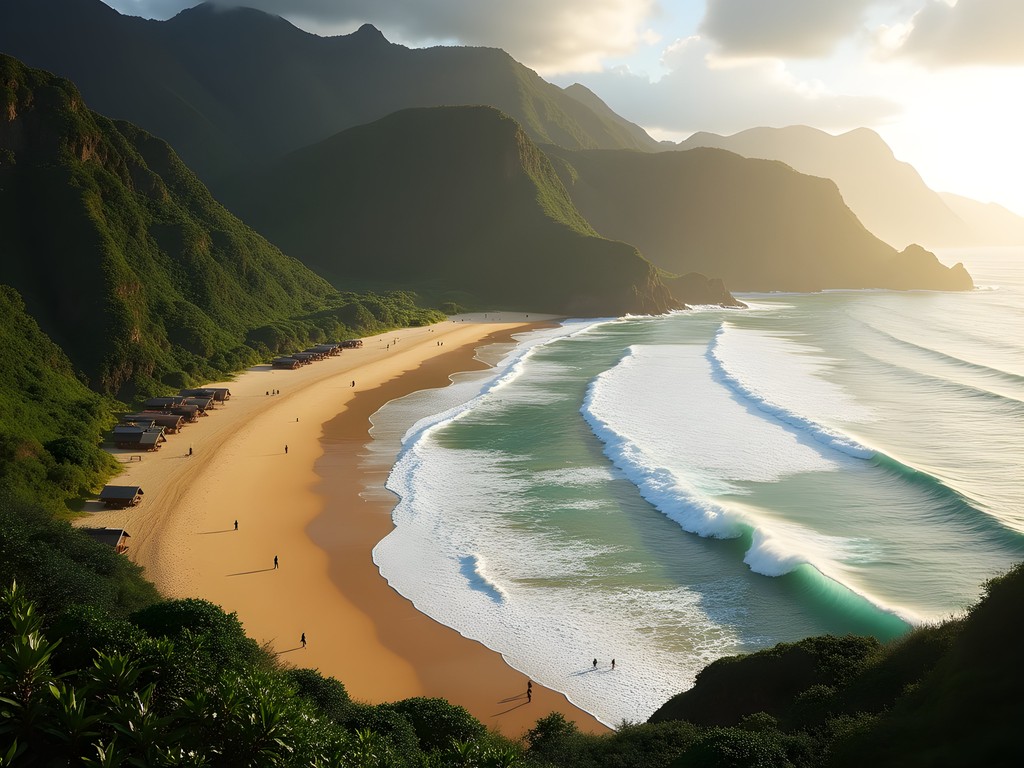
💡 Pro Tips
- Bring cash as the small beach kiosks don't accept cards
- Strong currents make swimming challenging – stay close to shore if you're not a confident swimmer
- Weekends get busy with local surfers – visit midweek for a more tranquil experience
Praia da Joatinga: The Secret Cove
Some places feel like they're actively trying to remain hidden. Praia da Joatinga is one of them. Tucked away in the affluent Joá neighborhood, this small beach requires both determination and good timing to visit – it's completely submerged during high tide.
I learned about Joatinga from Camila, a local animator I connected with through industry contacts. 'You want authentic Rio beaches? This one requires effort, but it's worth it,' she promised.
The adventure began with finding the entrance – a discrete path between luxury homes that's easy to miss without guidance. After descending a steep trail (wear proper footwear, not the flip-flops I mistakenly chose), I emerged onto what felt like a private cove from a fantasy novel. Surrounded by massive boulders and lush vegetation, the small beach has crystal-clear water that rivals Caribbean destinations.
What makes Joatinga special is its exclusivity – not because of any official restriction, but simply because it remains relatively unknown and requires planning around tide schedules. I arrived around 10 AM as the tide was receding, armed with my dry bag to keep my camera gear safe during the somewhat challenging descent.
The crowd here was noticeably different – predominantly local residents from nearby neighborhoods, families who've been coming for generations, and a few in-the-know expatriates. I spent the day alternating between swimming in the natural pools formed by rock formations and chatting with a local family who shared their picnic of pão de queijo and fresh fruit with me.
By mid-afternoon, I noticed people starting to pack up – a silent acknowledgment of the returning tide. The beach disappears completely during high tide, a natural rhythm that has protected this place from overdevelopment and preserved its magic.
As I carefully made my way back up the trail, I understood why Camila had been hesitant to share this spot. Some places retain their power precisely because they remain half-secret, passed along through whispered recommendations rather than guidebook highlights.

💡 Pro Tips
- Check tide tables before visiting – the beach disappears completely at high tide
- Wear appropriate footwear for the steep trail down to the beach
- Bring everything you need as there are no vendors or facilities
Praia da Reserva: The Preservation Success Story
Sometimes the most remarkable beaches aren't the most hidden but the most protected. Praia da Reserva, a 2.5-kilometer stretch between Barra da Tijuca and Recreio dos Bandeirantes, represents Rio's most successful beach conservation story – and offers a glimpse into what sustainable beach tourism could look like.
I visited Reserva after hearing about its environmental significance from a marine biologist I met at my hostel. 'It's the only beach in Rio where the original sandbank vegetation has been preserved,' he explained. 'You'll see the difference immediately.'
He wasn't exaggerating. Arriving by bus from Barra (an easy 15-minute ride), I stepped onto a beach that felt fundamentally different from the urban beaches closer to the city center. Instead of concrete promenades and high-rises, Reserva is backed by protected native vegetation – restinga ecosystems that once lined all of Rio's coast before development.
The beach itself is extraordinarily wide – I measured 87 steps from the vegetation line to the water at low tide. This creates natural zones: families with children playing near the shore, groups of friends playing footvolley (a Brazilian fusion of volleyball and soccer) in the middle, and solitary walkers like myself exploring the dunes near the vegetation.
What struck me most was the cleanliness. As part of the Reserva de Marapendi conservation area, this beach benefits from strict environmental protection and regular cleaning efforts. I spent the afternoon alternating between swimming and walking the shoreline with my polarized sunglasses which cut the glare and let me spot tiny crabs scuttling across the sand – something I hadn't seen on Rio's more urban beaches.
Like many conservation success stories, Reserva's protection came after a battle. Locals fought against development plans in the 1990s, resulting in the area's protected status. Today, it stands as a testament to what community activism can preserve.
For lunch, I visited one of the beach's famous barracas (kiosks) where I enjoyed açaí with granola and fresh fruit while watching kiteboarders harness the reliable afternoon winds. Unlike the more commercial kiosks at Copacabana, these establishments have strict environmental guidelines – no plastic straws, for instance, and careful waste management.
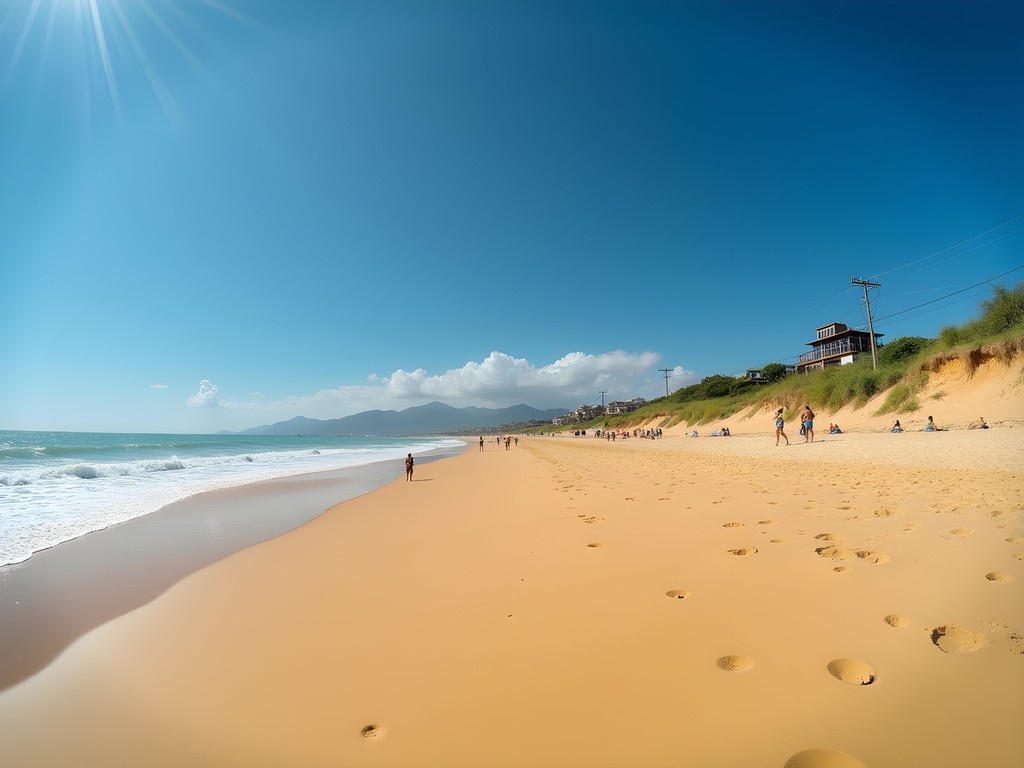
💡 Pro Tips
- Visit on weekdays to avoid the local weekend crowds
- The beach has limited shade – bring sun protection or rent an umbrella from one of the kiosks
- Try the açaí at Barraca do Pepê – widely considered the best on the beach
Praia do Secreto: The Hidden Natural Pool
Some places earn their names honestly. Praia do Secreto (Secret Beach) isn't just hidden – it's practically invisible unless you know exactly where to look. Technically more of a natural pool than a traditional beach, this hidden gem sits between Prainha and Grumari beaches, concealed behind rocky outcrops.
I would have completely missed it if not for João, a local photographer I met while hiking near Pedra do Telégrafo. When I mentioned my quest to find Rio's hidden beaches, his eyes lit up. 'I'll show you something special tomorrow,' he promised. 'Wear shoes you can get wet.'
The next morning, we parked along the road between Prainha and Grumari, where nothing indicated anything special nearby. Following João down a barely visible trail through dense vegetation, we scrambled over several large boulders before the 'secret' revealed itself – a perfect natural swimming pool formed by volcanic rocks, filled with crystal clear seawater refreshed with each high tide.
Unlike the crashing waves at nearby beaches, Secreto offers calm, protected waters – nature's version of an infinity pool. The rocky basin, approximately 10 meters across, varies in depth from knee-deep to over my head in certain spots. The water was so clear I could see colorful fish darting between underwater rocks.
'Only come during low tide,' João warned as we floated in the refreshing water. 'During high tide, waves crash over these rocks and create dangerous currents.' This natural rhythm has protected Secreto from becoming too popular – you can only safely visit during specific tide windows, which requires planning.
We spent two hours swimming, taking photos, and watching brave locals jump from the surrounding rocks into the deeper sections. I was grateful for my water shoes as the rocks can be sharp and slippery – definitely not a place for bare feet.
What makes Secreto magical isn't just its beauty but the feeling of discovery. Even though locals have known about it for generations, each visitor feels like they're uncovering something special. As we left, I noticed João carefully picking up a small piece of trash someone had left behind. 'We protect what we love,' he said simply.

💡 Pro Tips
- Visit only during low tide – check tide tables before planning your trip
- Wear water shoes to protect your feet from sharp rocks
- Bring your own water and snacks as there are no facilities nearby
Praia de Grumari: The Pristine Escape
Sometimes the road less traveled makes all the difference. In the case of Praia de Grumari, it's a winding coastal road that keeps this beach feeling wonderfully remote despite being part of Rio de Janeiro proper.
I visited Grumari on my fifth day in Rio, after exhausting the more accessible beaches. Getting there without a car requires determination – a combination of buses or an expensive taxi ride. This transportation challenge serves as a natural filter, keeping Grumari significantly less crowded than beaches closer to the city center.
The effort pays off immediately upon arrival. Stretching for nearly 3 kilometers, Grumari presents a vision of what Rio's coastline must have looked like before urbanization. Protected as part of an environmental conservation area since the 1980s, the beach is backed by rolling hills covered in Atlantic rainforest rather than high-rise apartments.
I arrived early, around 9 AM, when the beach was nearly empty except for a few surfers and fishermen preparing their nets. The morning light painted everything golden, and the absence of buildings created a rare sense of immersion in nature. Without the city's visual noise, I could focus on the elemental experience – the rhythmic percussion of waves, the feel of soft sand between my toes, the scent of salt and tropical vegetation.
The water at Grumari tends to be rougher than at Rio's urban beaches, with strong currents that demand respect. I stayed in the shallows, letting waves crash around my knees while watching surfers tackle the more substantial breaks further out. By midday, I'd worked up an appetite and visited one of the rustic restaurants that line the road behind the beach. These simple establishments specialize in fresh seafood – my grilled octopus with garlic and olive oil was easily one of the best meals I had in Brazil.
What makes Grumari special is its commitment to remaining undeveloped. The restaurants are all simple structures, there are no permanent vendors on the sand, and the only buildings visible are the necessary bathroom facilities. It's a rare example of prioritizing natural beauty over commercial opportunity.
As the afternoon progressed, more locals arrived – primarily families and groups of friends who had made the journey specifically to escape the more commercialized beaches. I spent hours alternating between swimming, walking the shoreline, and simply sitting under my rented umbrella, sketching the landscape in my travel journal.
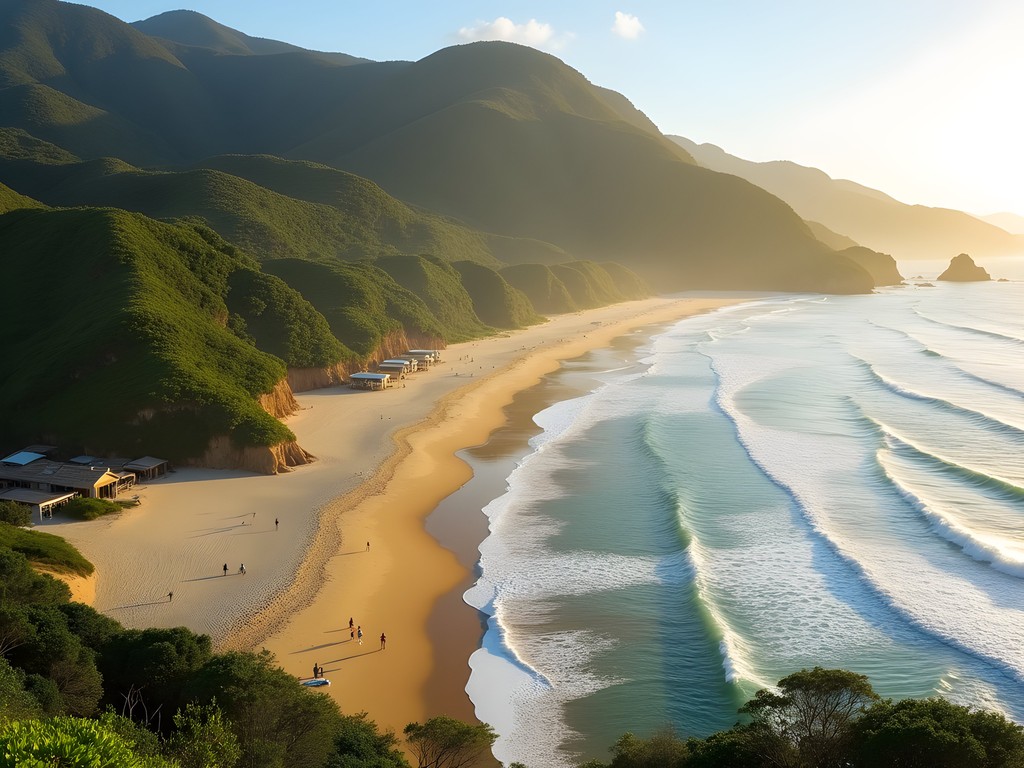
💡 Pro Tips
- Arrive early to secure parking if coming by car
- Bring cash as the restaurants and umbrella rentals don't accept cards
- The beach has limited facilities – pack accordingly with water and sun protection
Praia do Perigoso: The Adventure Beach
Some beaches earn their reputation through beauty alone. Others, like Praia do Perigoso (Dangerous Beach), combine stunning natural beauty with the thrill of adventure. As someone who grew up exploring the rugged coastlines of Alaska with my father, I'm drawn to places that require effort – where the journey becomes part of the destination's story.
Perigoso lives up to its name, not because the beach itself is particularly treacherous, but because reaching it requires a challenging 40-minute hike through Atlantic rainforest. I learned about it from a group of Brazilian hikers I met at my hostel who invited me to join their weekend expedition.
'Are you sure you want to come?' asked Carolina, the group's de facto leader. 'It's beautiful but not easy to reach.' Her concern was warranted – this isn't a beach for flip-flops and beach bags. I assured her that my hiking backpack was packed with essentials and my trail runners were ready for the challenge.
We set out early from Barra de Guaratiba, following a sometimes-steep trail that winds through dense vegetation. The humidity was intense, and I was grateful for every water break. But the physical effort created a palpable sense of anticipation – we were working for this beach in a way that most tourists never experience in Rio.
After crossing a small stream and navigating some rocky sections that required careful footing, we emerged from the forest to a collective gasp. Below us stretched a perfect crescent of golden sand, embraced by dramatic cliffs and kissed by waves that seemed to stretch all the way to Africa. Most importantly: we were alone except for two local fishermen casting lines from the rocks.
The isolation is Perigoso's greatest gift. With no road access, facilities, or vendors, it remains gloriously undeveloped. We spent the day swimming in water so clear I could see fish darting around my legs, exploring tidal pools teeming with marine life, and simply marveling at the raw beauty of this hidden corner of Rio.
Carolina explained that even many lifelong Rio residents have never visited Perigoso. 'This is how we keep our special places,' she said with a wink. 'Just hard enough to reach that only those who truly appreciate them will make the effort.'
As we hiked back in the golden late afternoon light, I felt that rare satisfaction that comes from experiencing something authentic and earned. Perigoso may not be for everyone – but that's precisely what keeps it magical.
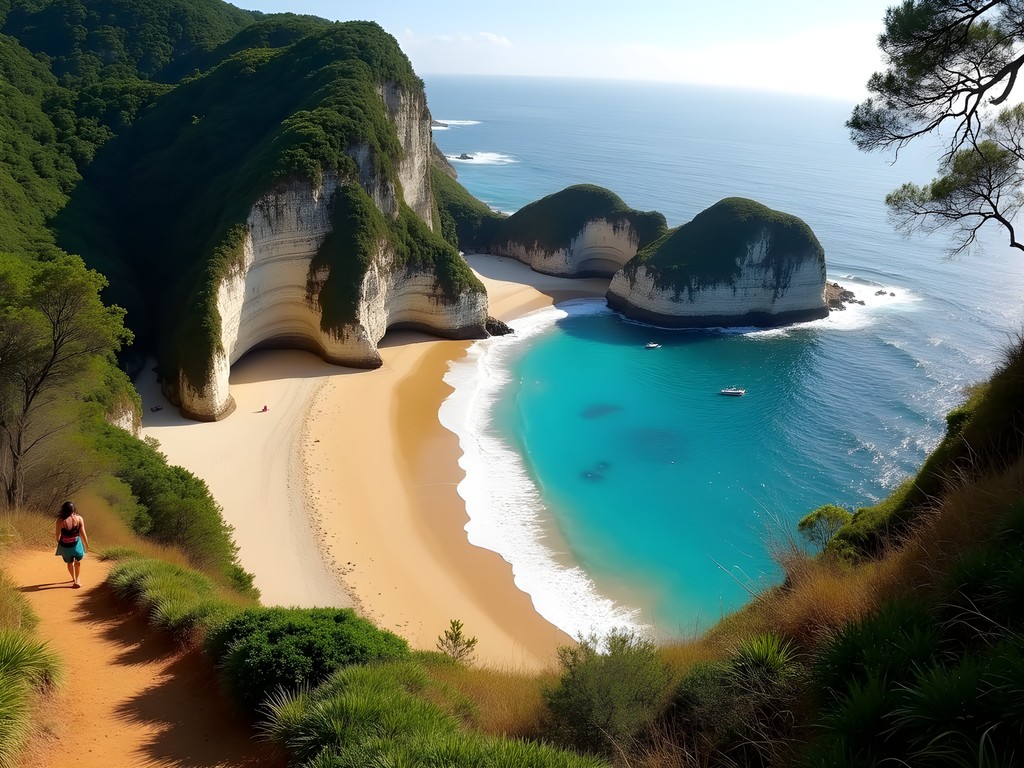
💡 Pro Tips
- Wear proper hiking shoes and bring sufficient water for both the hike and beach time
- Start early in the morning to maximize beach time before hiking back
- Tell someone your plans if hiking alone – cell service is limited on parts of the trail
Final Thoughts
As my two weeks in Rio drew to a close, I found myself sitting on Arpoador rock between Ipanema and Copacabana – the very beaches I'd initially come to see. Watching surfers catch the last waves of the day while cariocas applauded the setting sun (yes, they really do that!), I reflected on how my perception of Rio had transformed. The city's famous beaches are undeniably spectacular, but Rio's true coastal magic lives in these hidden coves and protected stretches where nature still dictates the rhythm of life. These seven beaches offered more than just beautiful swimming spots – they revealed a Rio that exists beyond postcard images, a Rio that locals fiercely protect and generously share with travelers willing to venture beyond the obvious. Whether you're seeking the adventure of a challenging hike to Perigoso, the natural wonder of Secreto's rock pool, or simply the more authentic vibe of Prainha, these hidden gems reward curiosity with experiences that feel genuinely discovered rather than merely consumed. So next time you find yourself in this magnificent city, set aside at least one day to explore beyond the famous shores. The real Rio is waiting.
✨ Key Takeaways
- The best beaches in Rio often require extra effort to reach but reward visitors with fewer crowds and more authentic experiences
- Always check tide tables when visiting Rio's beaches – some are only accessible or safe during specific tide conditions
- Respect local environmental protections that keep these beaches pristine – pack out all trash and follow posted guidelines
📋 Practical Information
Best Time to Visit
December through March (Brazilian summer)
Budget Estimate
$50-100 per day including transportation and meals
Recommended Duration
2-3 days to explore multiple hidden beaches
Difficulty Level
Beginner To Moderate Depending On Beach Choice

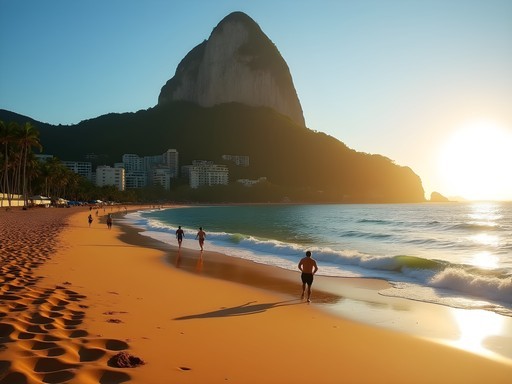







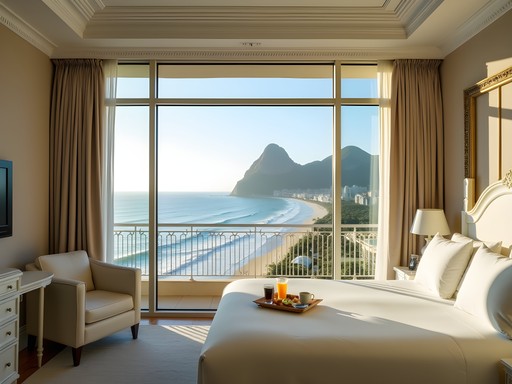

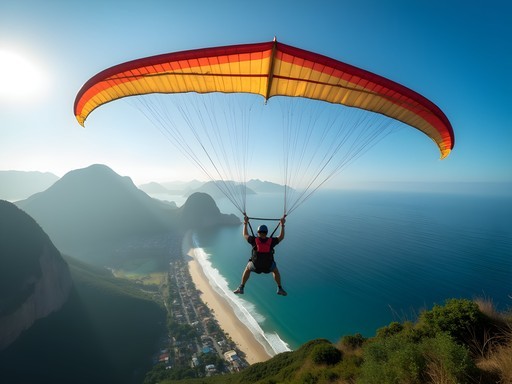
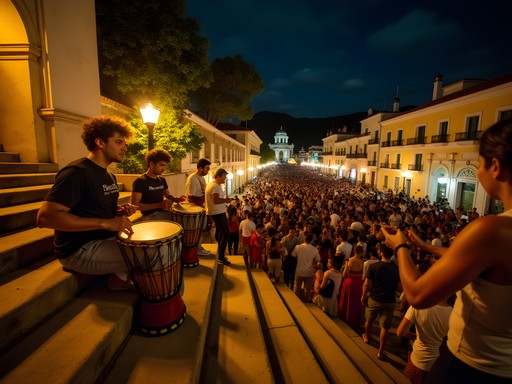
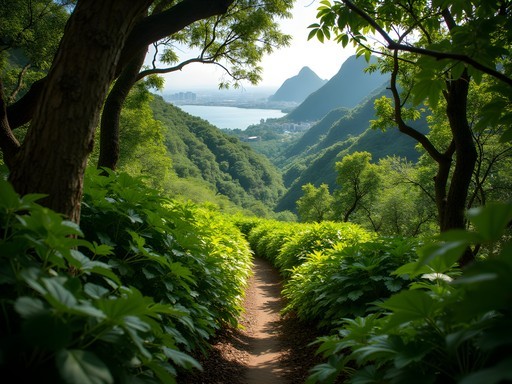
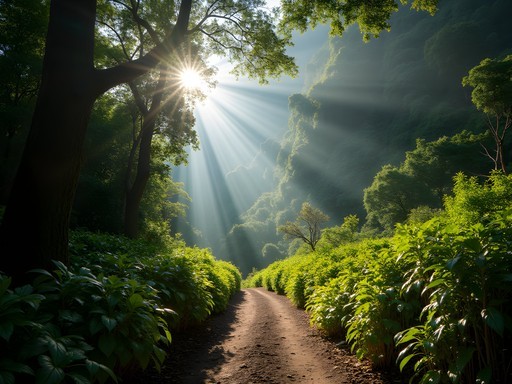
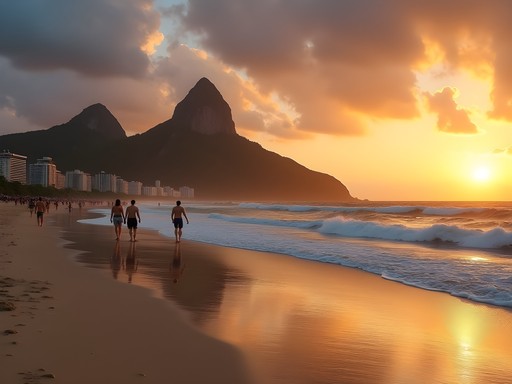
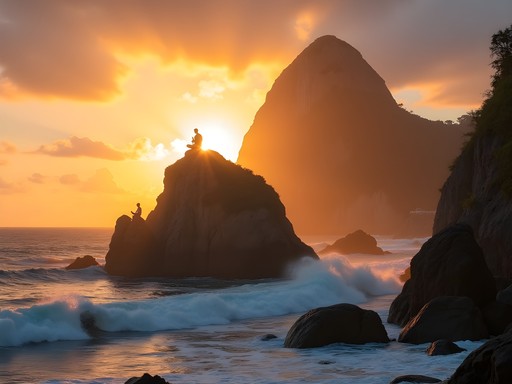
Comments
Savannah Torres
Maya, this brought back so many memories! We took our kids (8 and 10) to Rio last year and followed a similar path of discovery. After two crowded days at Copacabana, we ventured to Praia da Reserva and it completely changed our trip. The kids loved the cleaner sand and calmer waves. We even spotted some small crabs near the conservation area which became the highlight of their trip! For families reading this, I'd recommend bringing plenty of snacks and water as the food options are limited compared to the main beaches. We packed our beach shelter which was essential for giving the kids a break from the sun. The effort to reach these hidden spots is absolutely worth it - our family photos from Joatinga are still our favorites from the entire Brazil trip!
summerlover
Did you feel safe bringing kids to these beaches? Planning a family trip and this is my main concern!
Savannah Torres
Absolutely! Praia da Reserva and Vermelha felt very family-friendly. Just go during daylight hours, don't bring valuables, and stay aware of your surroundings like anywhere. The locals were incredibly kind to our kids!
smartway
Just got back from Rio and visited Praia da Reserva. Way less crowded than Ipanema. Solid recommendations!
vacationlegend
How do you get to Joatinga? Is public transport an option or do you need to rent a car/take a taxi?
globemood
Uber is your best bet. Public transport doesn't go all the way and you need to hike down a trail to reach it. Worth the effort though!
Dylan Turner
Excellent curation, Maya. I visited Praia Vermelha last month and was struck by how the setting differs from Rio's more famous beaches. The dramatic backdrop of Sugarloaf Mountain creates an almost intimate atmosphere despite being relatively accessible. For those considering a visit, I'd recommend pairing it with the cable car to Sugarloaf in late afternoon - you can enjoy the beach when it's less crowded, then catch sunset from above. The nearby Claudio Coutinho trail is also worth exploring for those seeking a bit of nature alongside beach time. The beach facilities are basic but adequate - come prepared with your own refreshments for the optimal experience.
Maya Murray
Thanks Dylan! Great tip about combining with the Sugarloaf visit - that's exactly what I did! The contrast between the touristy cable car experience and the relatively quiet beach below is part of what makes it special.
summerlover
OMG these photos are STUNNING!! 😍 Never knew Rio had so many hidden gems! Adding all of these to my bucket list right now!
summerwalker
How safe are these beaches compared to Copacabana? Heading to Rio in January and definitely want to explore beyond the tourist spots.
Maya Murray
Great question! These beaches are generally safe during daylight hours, but I'd recommend the same precautions as anywhere in Rio - don't bring valuables, go with others, and use ride-sharing apps for transportation. Praia da Reserva has lifeguards and is particularly family-friendly!
smartway
Been to Joatinga twice, felt safer than Copa honestly. Just don't flash expensive stuff.
globemood
Prainha is exactly as described - absolute paradise for surfers! Spent a whole day there last summer watching the locals do their thing.
globeadventurer
Is December a good time to visit these beaches? I'm planning my trip for Christmas break and wondering about crowds and weather.
Maya Murray
December is peak summer in Rio, so it will be hot and perfect for swimming! The hidden beaches in this post will definitely be less crowded than Copacabana/Ipanema during the holiday season, but they'll still have more people than usual. If possible, try visiting on weekdays for the best experience!
adventureseeker
Going to Rio in November! Which of these beaches is best for swimming vs. just sunbathing?
Maya Murray
For swimming, Praia Vermelha is your best bet - calm waters and lifeguards. Prainha and Joatinga have stronger currents (great for surfing, tricky for casual swimming). Praia da Reserva has moderate waves but gets deeper quickly. November should have perfect weather - enjoy!
Bryce Diaz
Maya, this brought back so many memories! I stumbled upon Praia da Joatinga completely by accident during my solo trip to Rio in 2022. The taxi driver actually tried to convince me not to go there because he thought it was too isolated for a gringo, but it ended up being the highlight of my trip. For anyone planning to visit: the path down to Joatinga is steep and can be slippery after rain. Wear proper shoes for the descent and change into sandals once you're down. Also, check the tide tables before going - during high tide, the beach almost completely disappears! Best to arrive 2-3 hours before low tide so you can enjoy the maximum beach time. The locals I met there were incredibly friendly and shared their açaí with me when they heard it was my first visit.
adventureseeker
Is it safe for solo female travelers?
Bryce Diaz
I'm not the best person to answer as a man, but I did meet several solo female travelers there. They mentioned they felt comfortable during daytime hours when there are other people around. As with anywhere in Rio, awareness is key. The beach is popular with locals and has a community feel to it, which helps.
Venture X
Premium card with 2X miles, $300 travel credit, Priority Pass